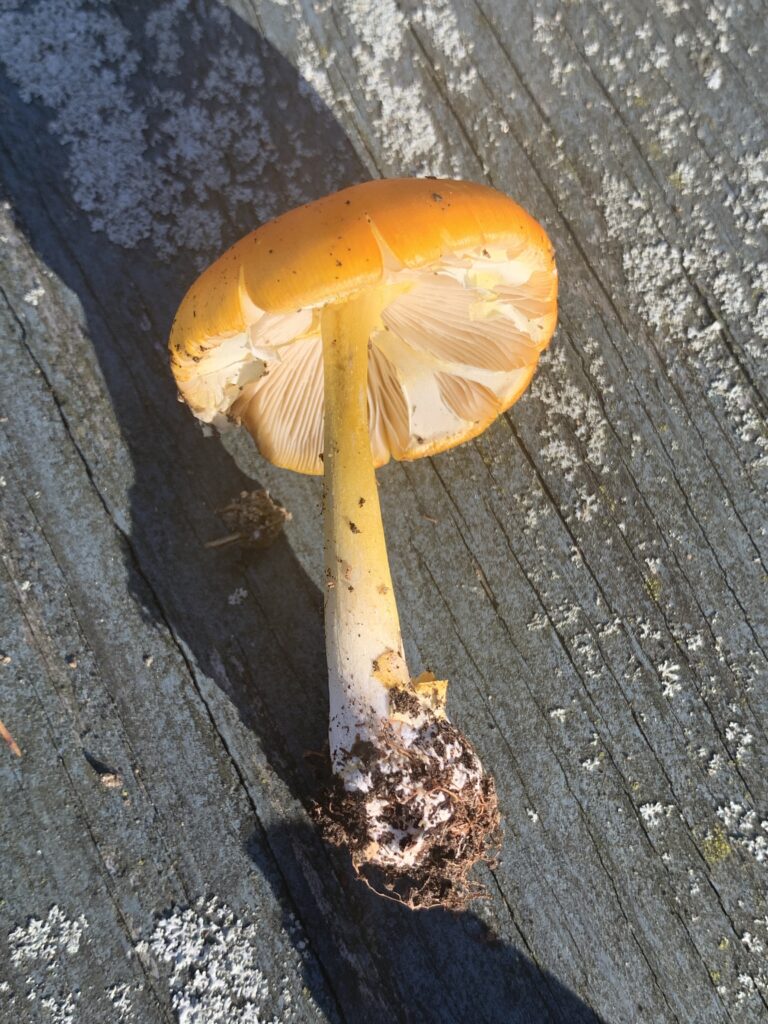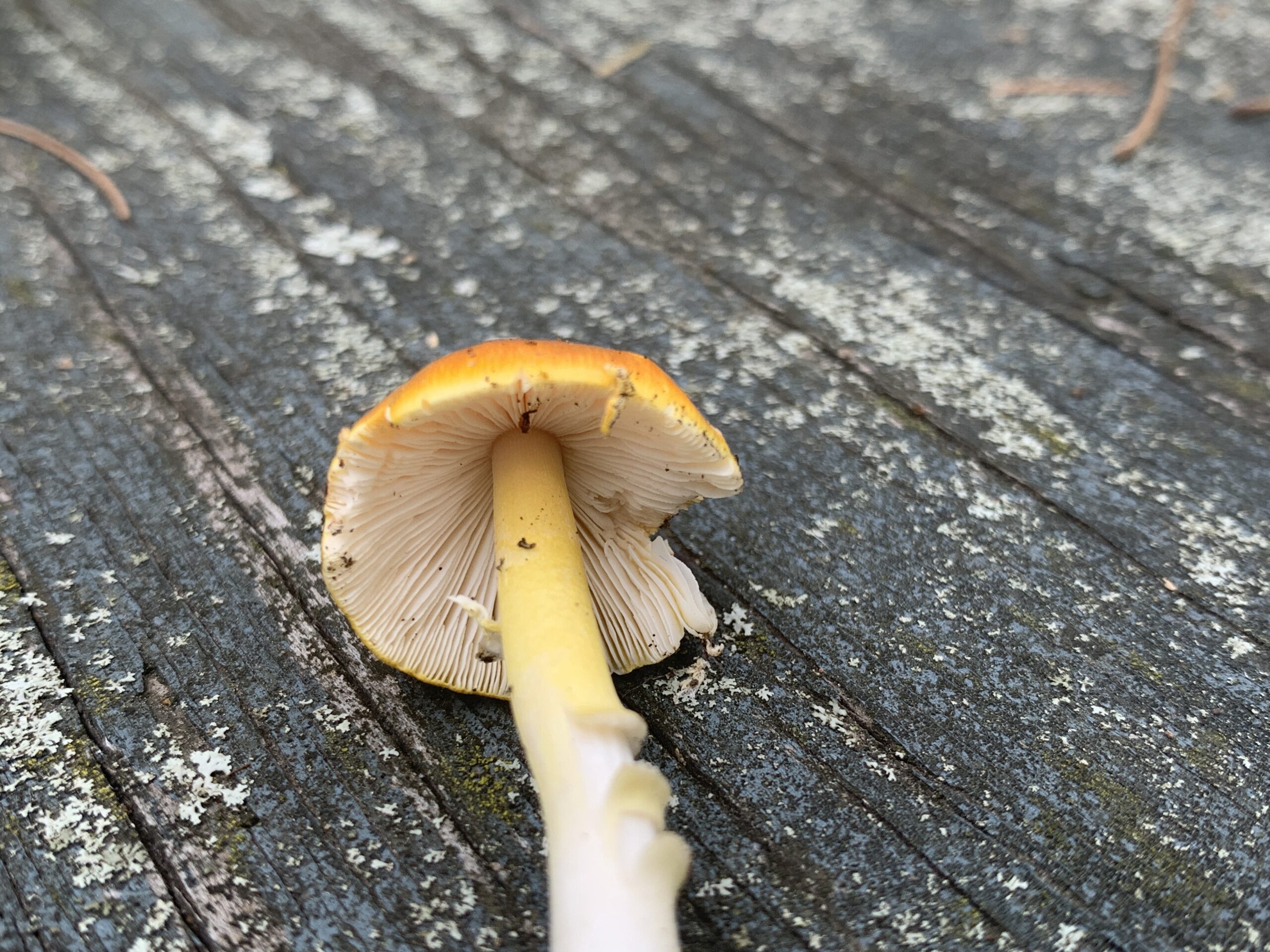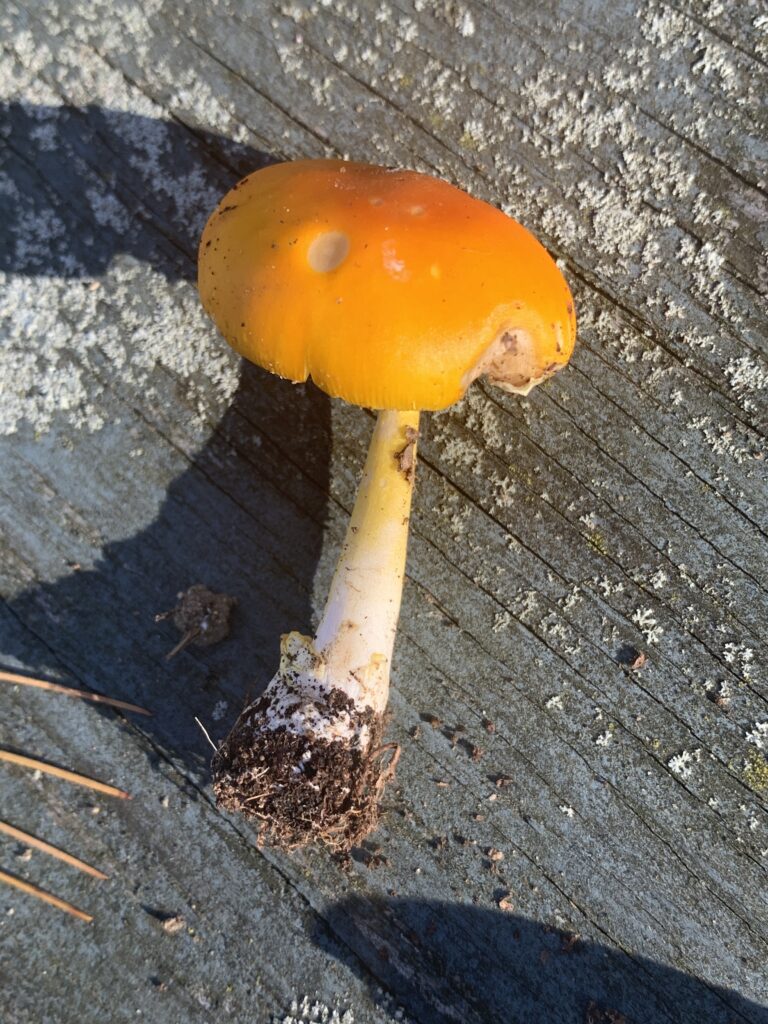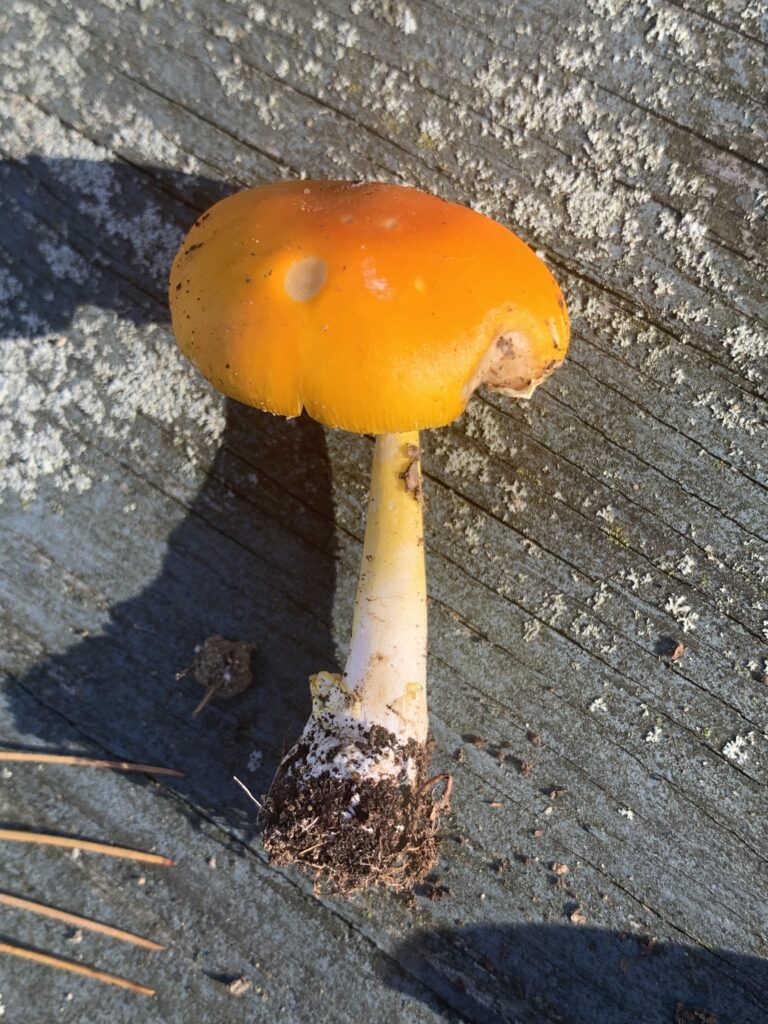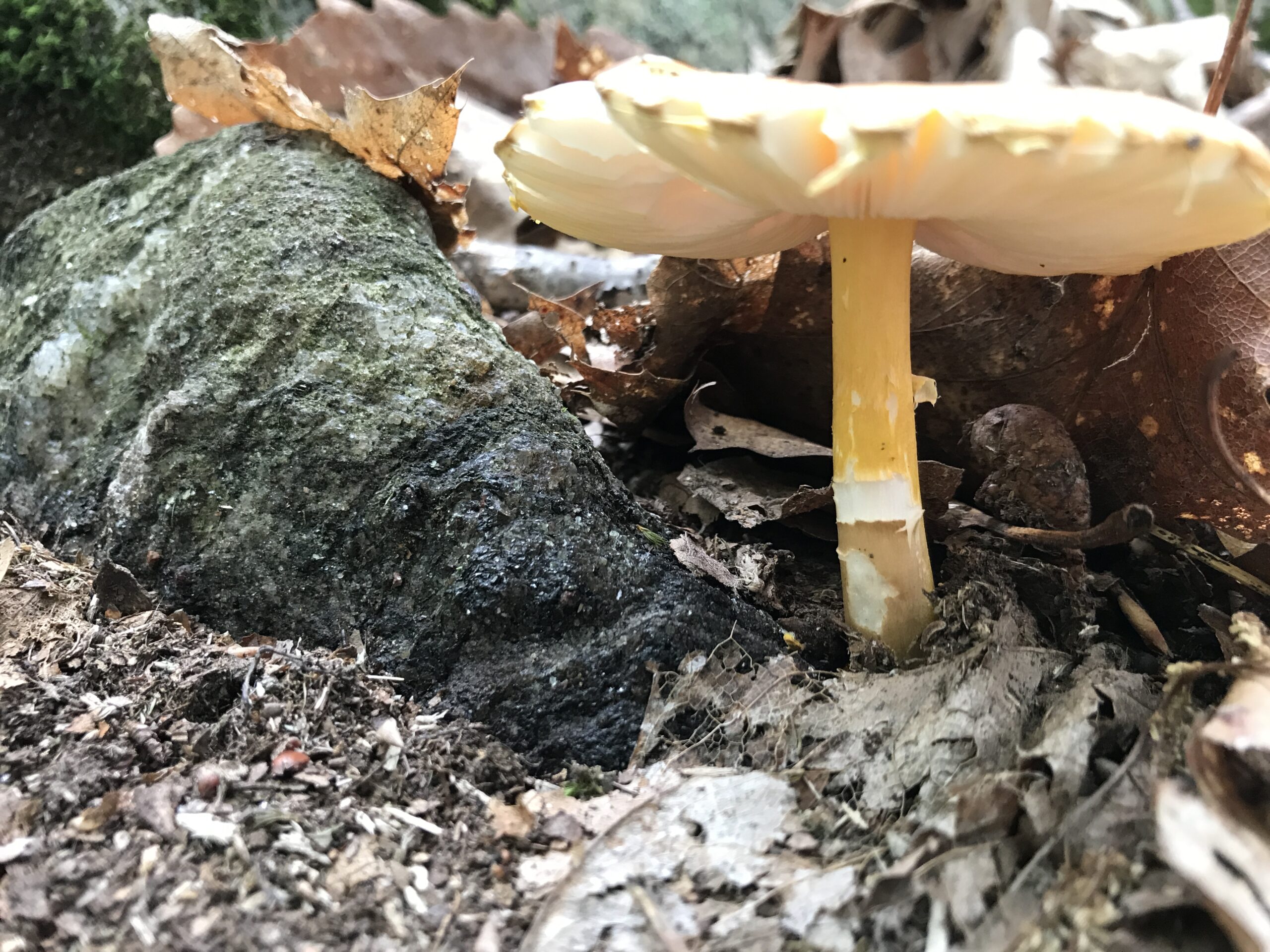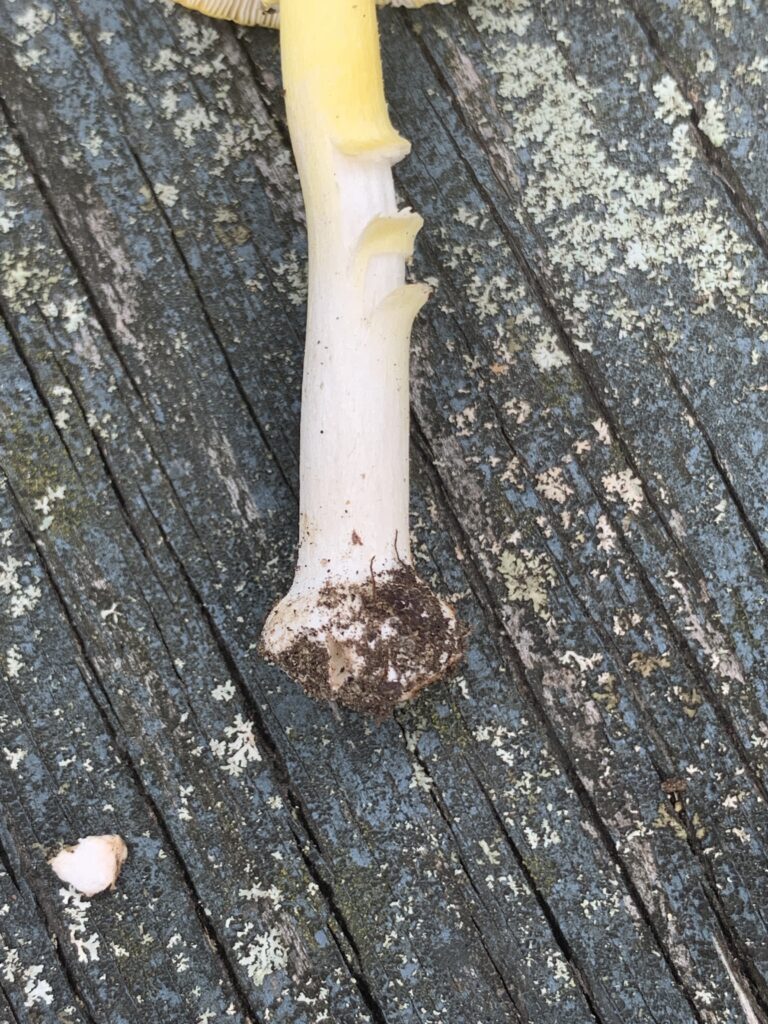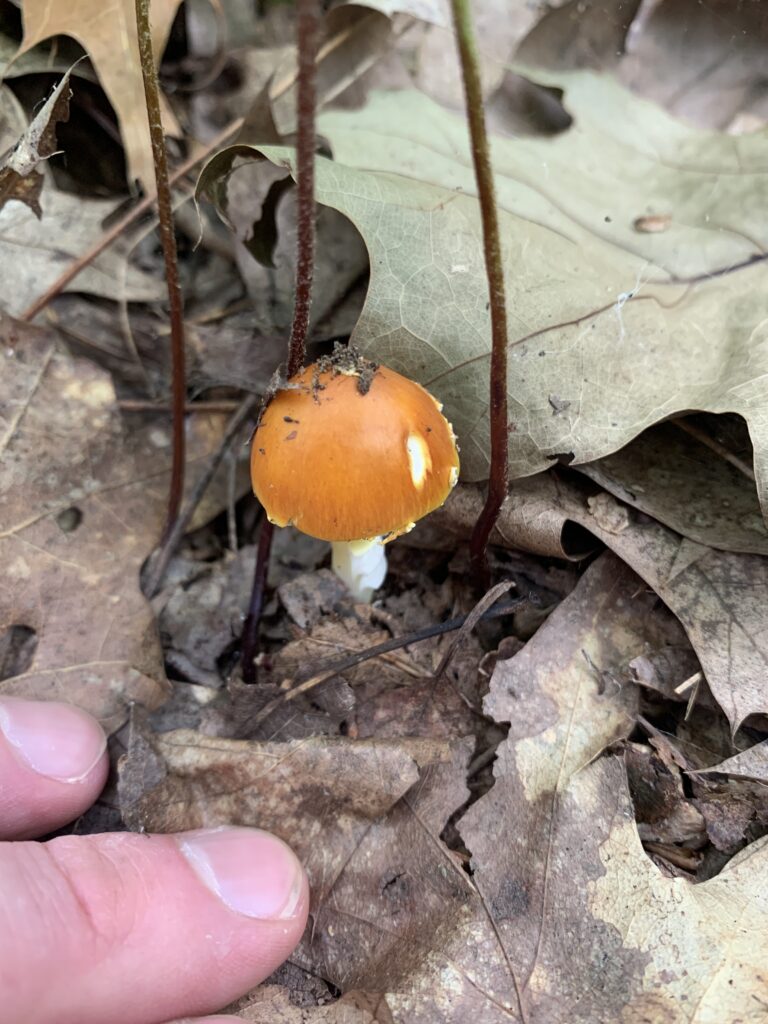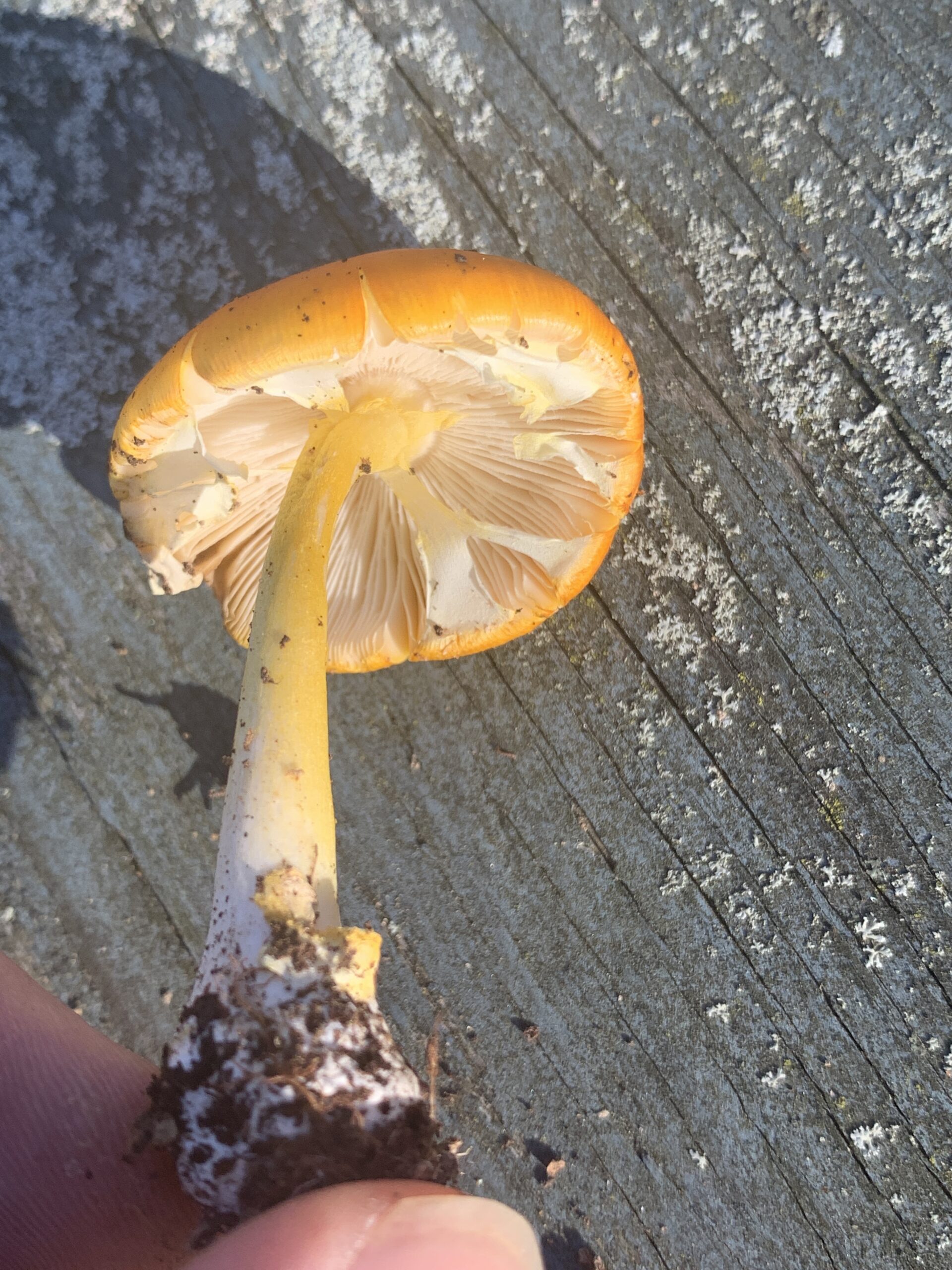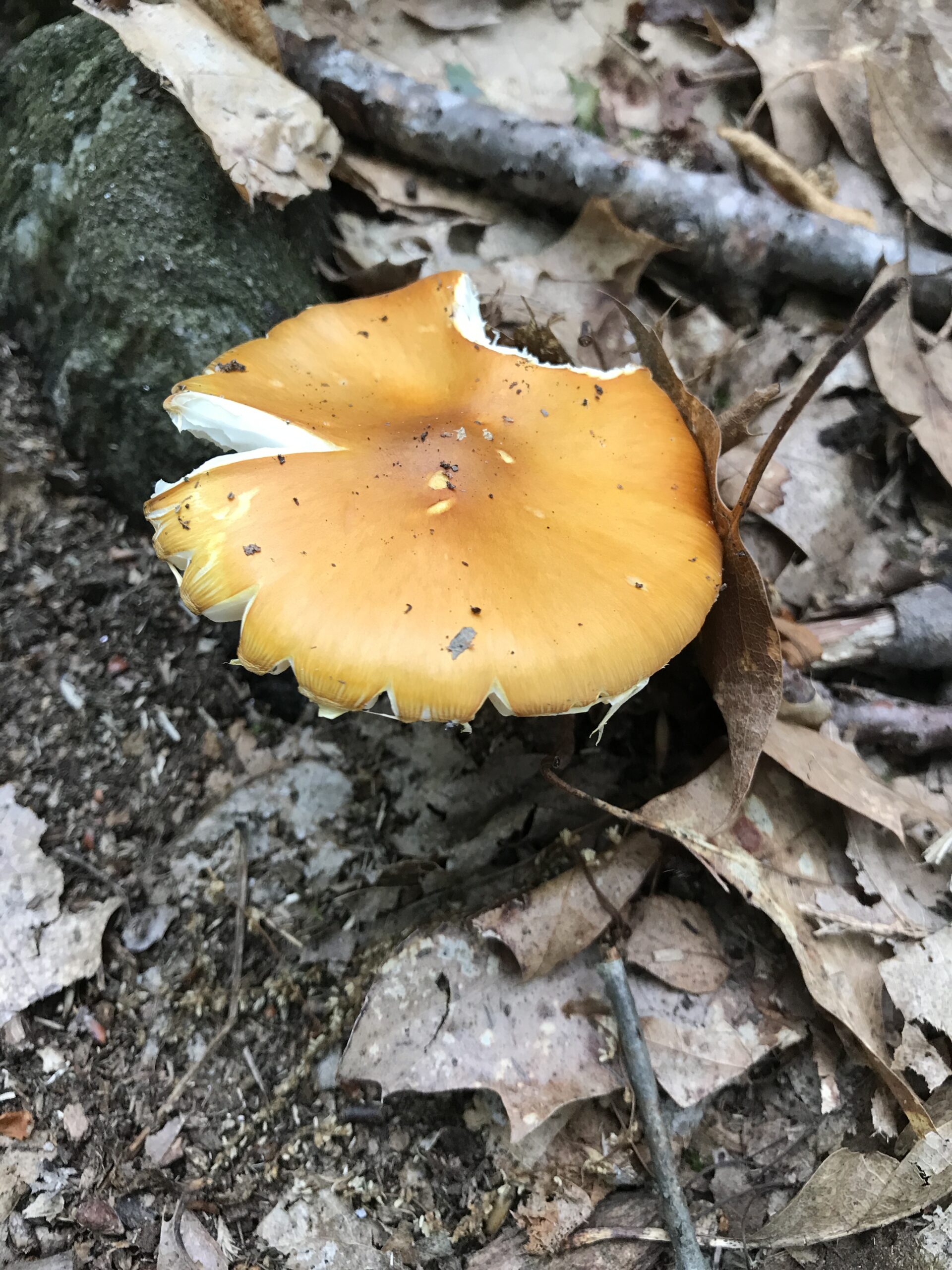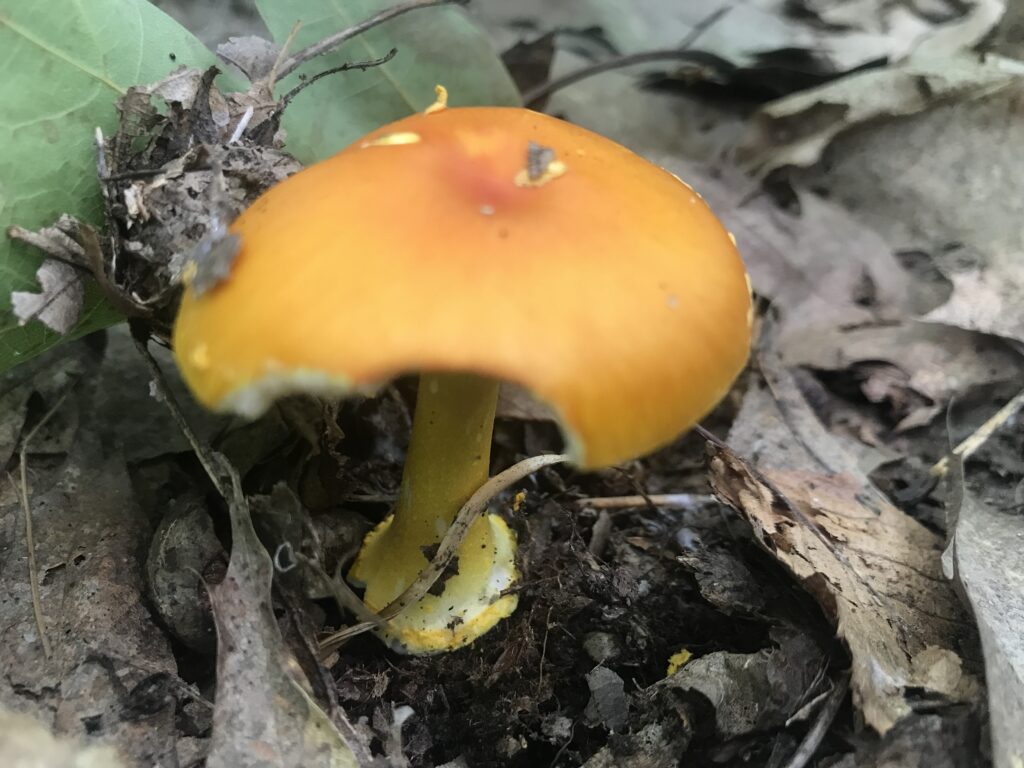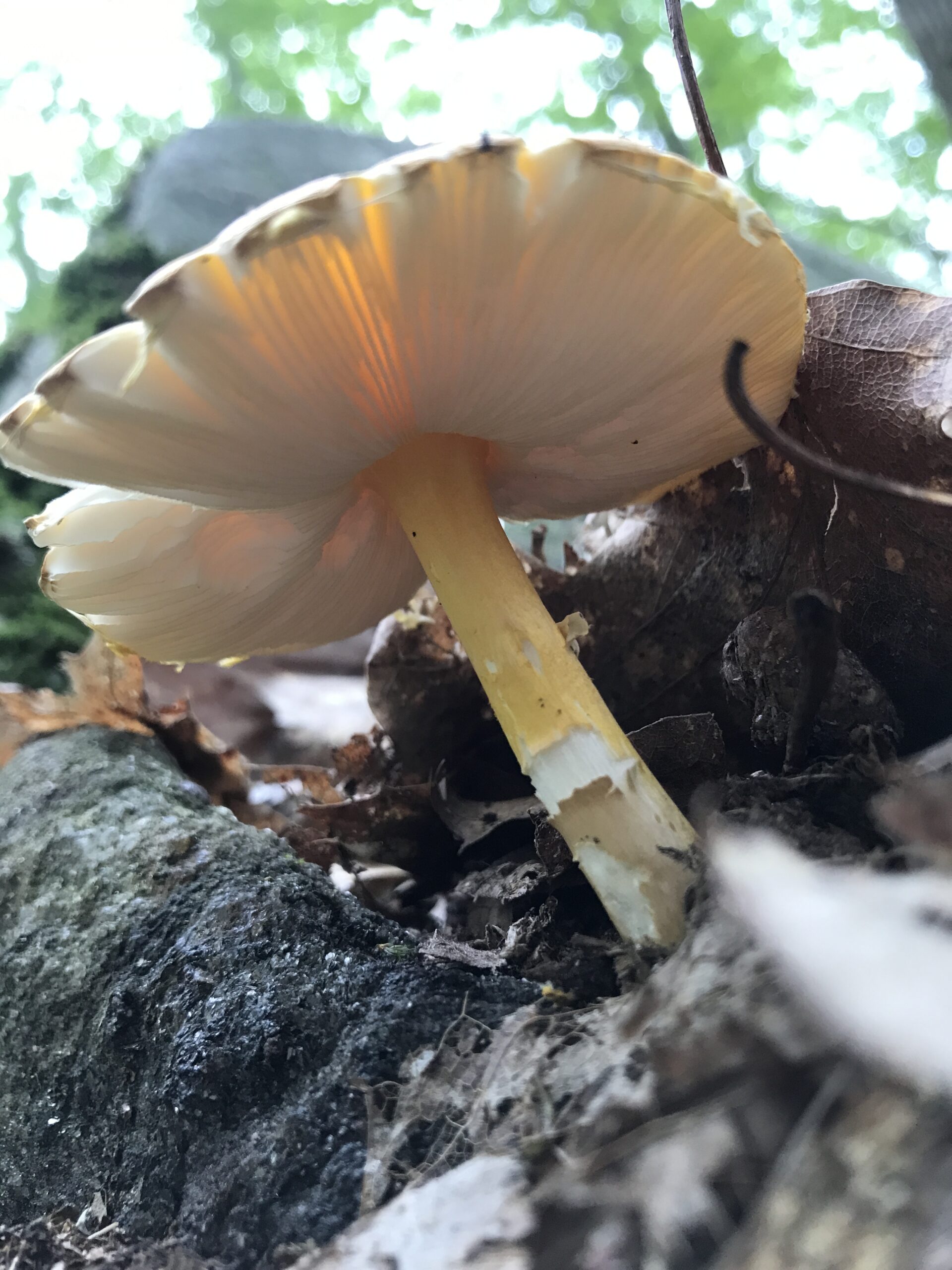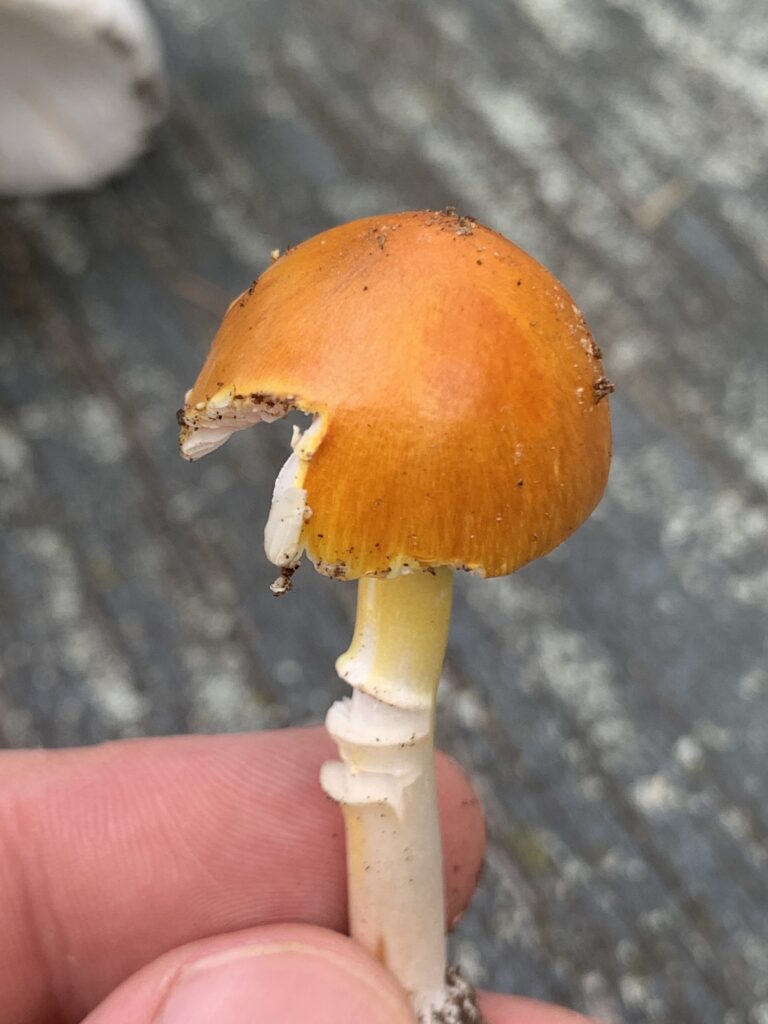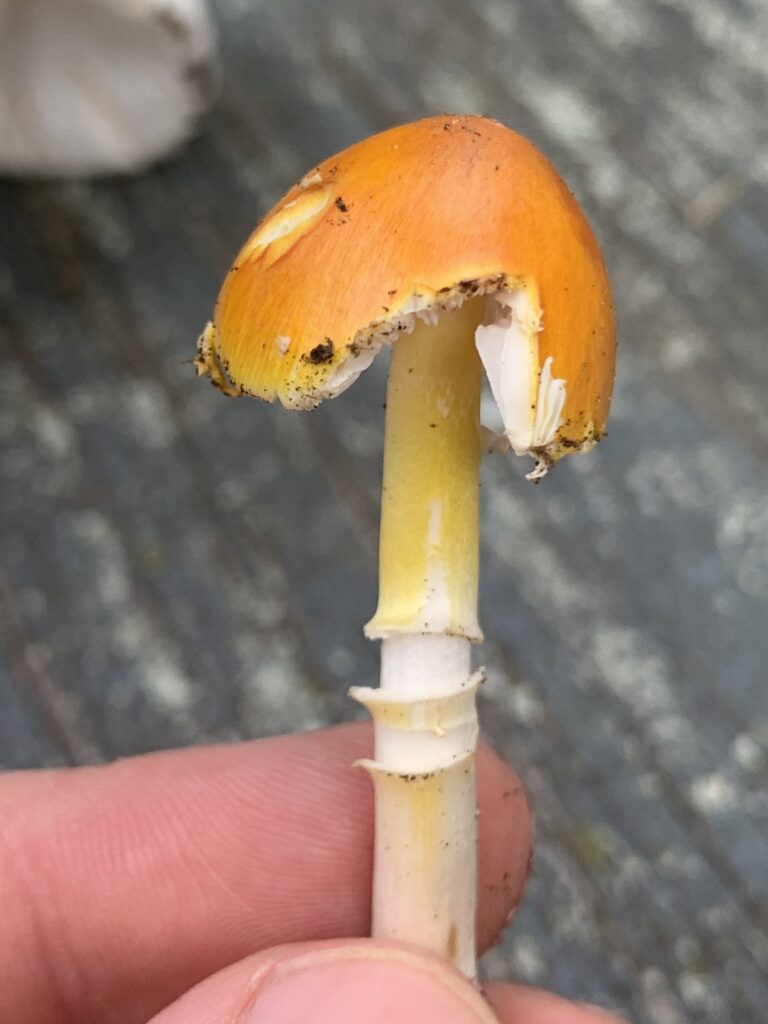| Ecology & Habitat | Mycorrhizal, Growing Singly or Gregariously (several individuals in a small area) Growing in deciduous and coniferous forests under hardwoods, and Hemlocks (a conifer) |
| Cap | Yellowish-Orange cap, with yellow warts |
| Gills | White gills |
| Stem | Yellow to white stem Stem base terminates in a small bulbous volva with out a sack, and without a collar, but may have remnants of the yellow veil loosely clung to it. |
| Partial Veil | White to Yellow ring, membranous and smooth |
| Universal Veil | Yellow outer veil remnants. |
| Spores | White |
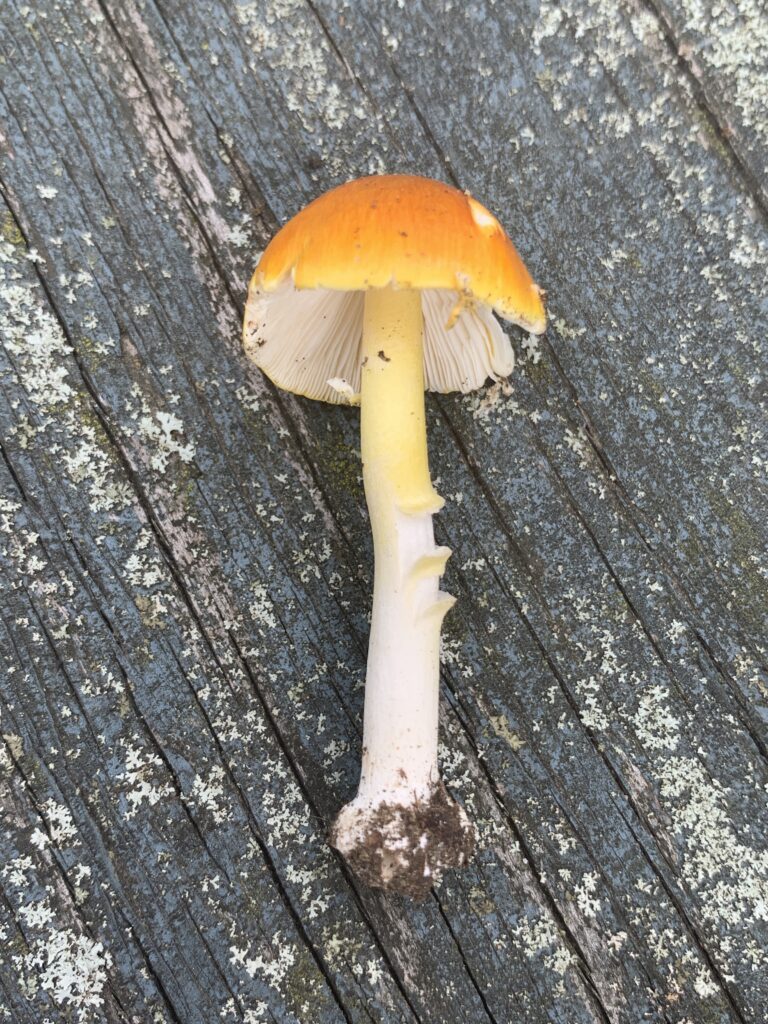
I’ve been dreading writing up the amanita section because so many of them look so similar. But, worse than that, I lost over two years of a photos “accidentally on purpose” while testing the remote wipe feature on my phone. Which leaves me with only some of my more recent finds. Some of those specimens and the resulting photos are less than ideal. The photos of the specimens below have had all the veil remnants on the cap washed away from rain. Hopefully I will find some more very soon and will be able to show you some better photos. However, without further ado…
Amanita flavoconia gets it’s name from the Latin words “flavus” meaning yellow and “conia” meaning powder. It is commonly known as the yellow patches or yellow warted mushroom due to its distinct yellowish-orange cap with yellow warts or patches. The cap can grow up to 10 cm in diameter and is convex when young, becoming flat or slightly depressed with age. The stem is yellow and white, frequently featuring more yellow than white. It has a ring or annulus that is white and and membranous but frequently has yellow on it in similar fashion as the stem. The volva at the base of the stem may have some remnants of the outer veil, but it will not have a ridge at the top of the volva. The gills are white and free from the stem. It is commonly found in deciduous forests and is known to form mycorrhizal associations with hardwoods like oak and beech, or Hemlock which is a conifer.
It’s most confusing look-alike for me is Amanita frostiana, whos cap is more yellowish than orangish when young, and is slightly smaller in size overall. They both have yellow patches or warts, a yellow to white stem with similar looking ring on it. The most distinct feature which sets A. frostiana apart from A. flavoconia is that A frostiana has a small collar at the top of the volva.

